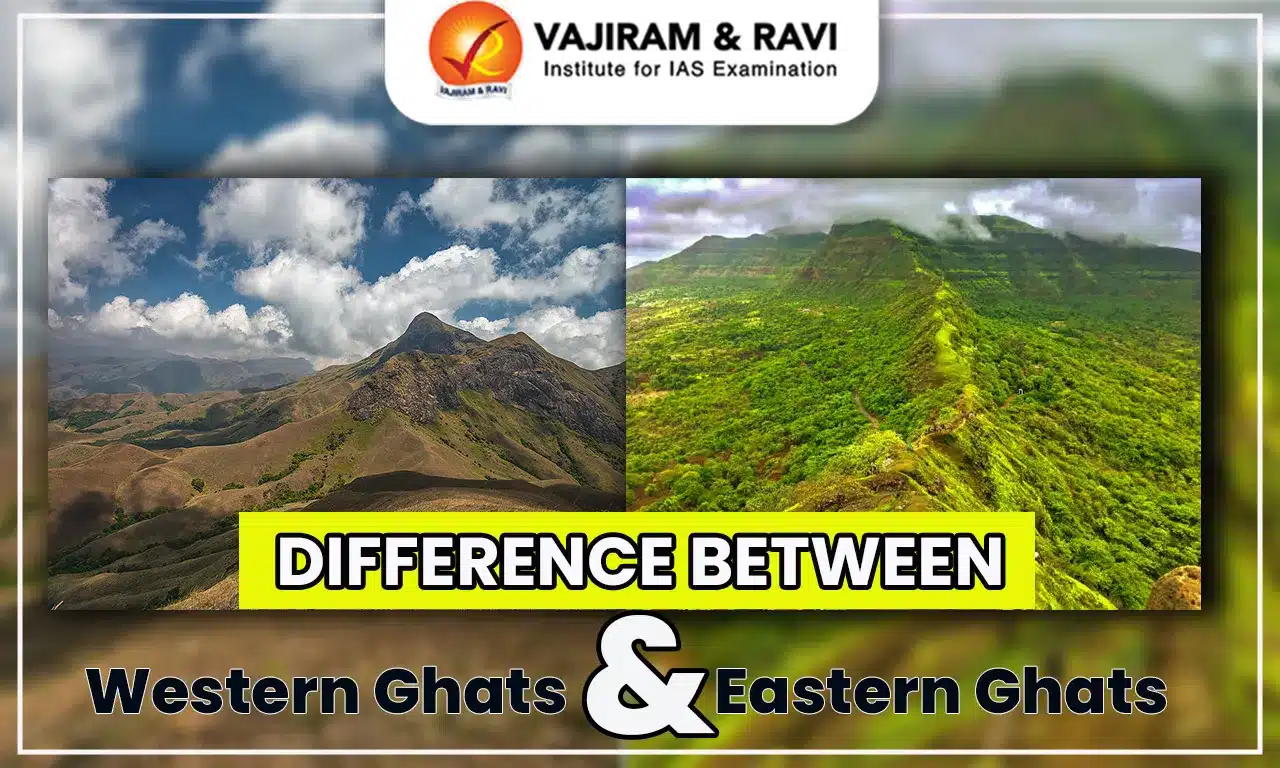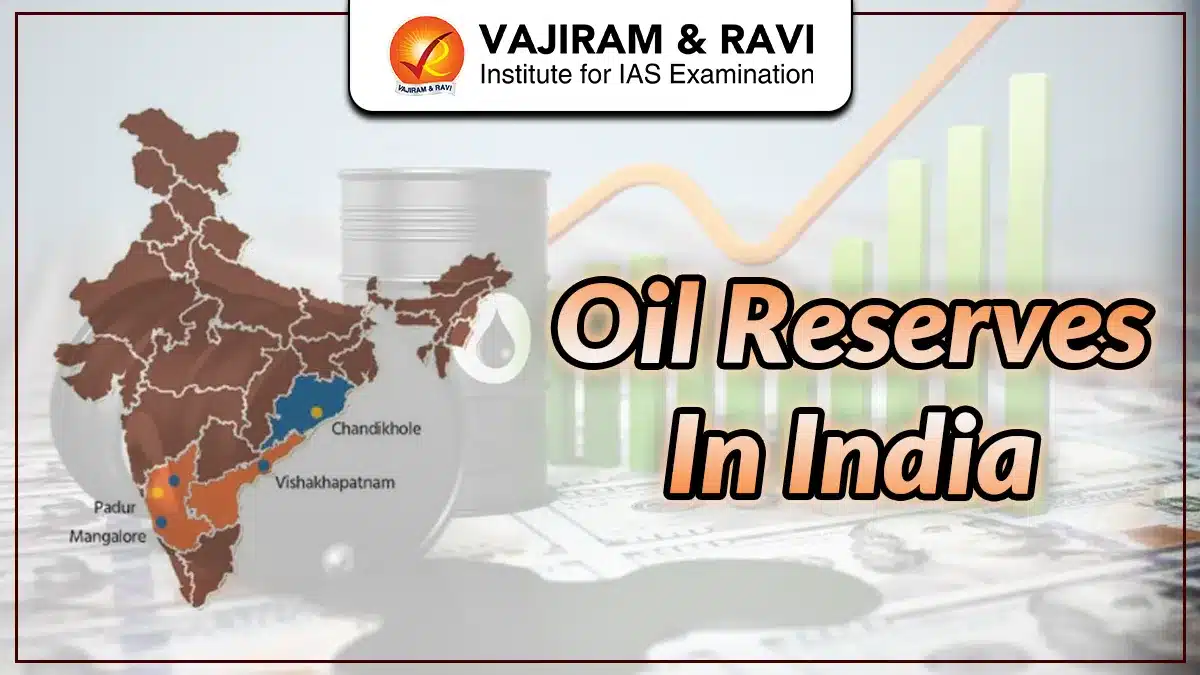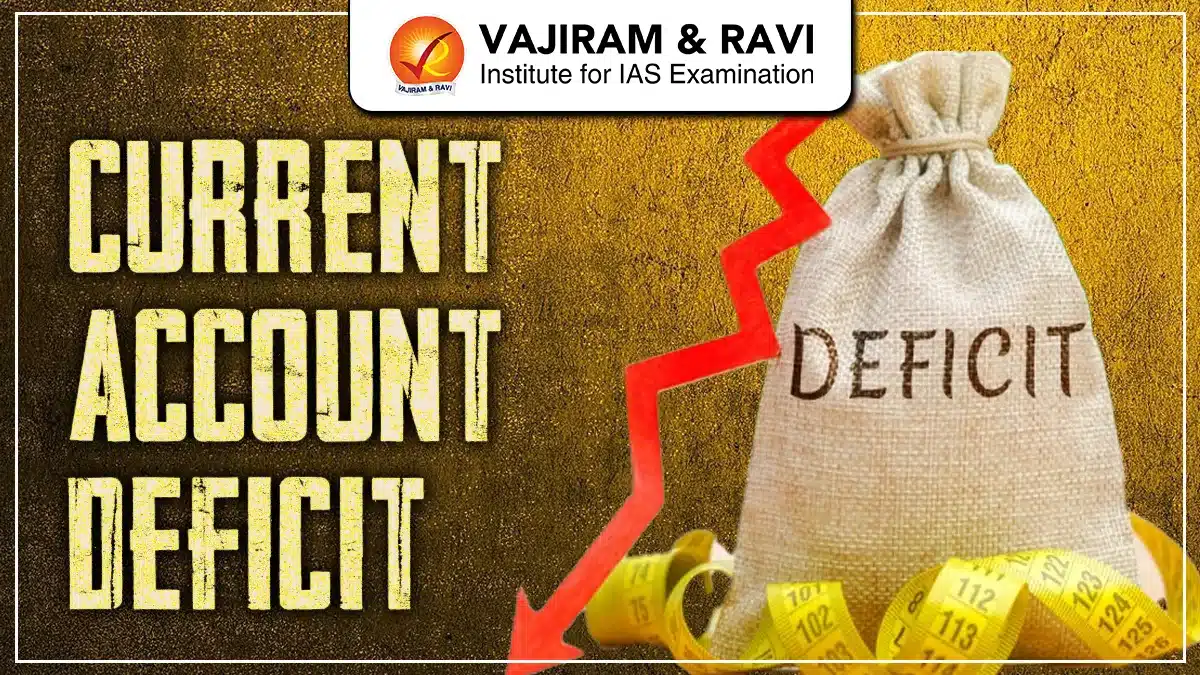The Western and Eastern Ghats are prominent mountain ranges flanking the western and eastern coasts of India, respectively. The Western Ghats are geologically older and more continuous in structure compared to the Eastern Ghats. In contrast, the Eastern Ghats are fragmented and less elevated, primarily due to prolonged erosion by rivers such as the Godavari, Mahanadi, and Krishna, which have carved through the range over time. Both ranges play a crucial role in shaping India’s climate, biodiversity, and watershed systems.
Physiographic Divisions of India
The Western Ghats and Eastern Ghats are part of the Peninsular Plateau region, forming the major mountain systems along India’s western and eastern coasts respectively. India can be broadly divided into the following physiographic divisions:
- The Northern and Northeastern Mountains
- The Northern Plains
- The Peninsular Plateau
- The Indian Desert
- The Coastal Plains
- The Islands
Difference Between Western Ghats and Eastern Ghats
The table below includes the Difference Between Western Ghats and Eastern Ghats:
| Difference Between Western Ghats and Eastern Ghats | ||
| Feature | Western Ghats | Eastern Ghats |
|
Location |
Run parallel to the western coast of India |
Run parallel to the eastern coast of India |
|
Extent |
From Gujarat to Kerala (through Maharashtra, Goa, Karnataka, and Tamil Nadu) |
From Odisha to Tamil Nadu (via Andhra Pradesh) |
|
Continuity |
Continuous mountain chain with few passes |
Discontinuous, broken by rivers like Mahanadi, Godavari, Krishna, and Cauvery |
|
Average Elevation |
Higher (900–1600 meters) |
Lower (600–900 meters) |
|
Highest Peak |
Anamudi (2,695 m) in Kerala |
Arma Konda (1,680 m) in Andhra Pradesh |
|
Drainage |
Source of west-flowing rivers like Mandovi, Zuari, and Periyar |
Rivers cut through and drain into the Bay of Bengal |
|
Rainfall |
Heavy rainfall due to southwest monsoon |
Less rainfall due to distance from monsoon winds |
|
Ecological Importance |
Rich biodiversity; UNESCO World Heritage Site |
Comparatively less biodiversity |
|
Climatic Impact |
Blocks monsoon winds, causing heavy rainfall on windward side |
Allows monsoon winds to pass; hence less rainfall |
|
Soil Type |
Laterite and red soils |
Red and alluvial soils |
|
Agriculture |
Plantation crops like tea, coffee, spices |
Rice, millets, pulses |
Western Ghats
The Western Ghats, also known as the Sahyadri Hills, stretch along the western edge of the Deccan Plateau. They are well-known for their biodiversity and serve as the origin point for several important rivers. Due to their steep slopes, they are less suitable for large-scale settlements but ideal for plantation farming. The region is also home to several national parks and wildlife sanctuaries.
Eastern Ghats
The Eastern Ghats are older and more eroded compared to the Western Ghats. They are not continuous and have been dissected by major rivers that drain into the Bay of Bengal. These hills are rich in minerals and support agriculture, particularly rice cultivation. While their biodiversity is lower than that of the Western Ghats, they still host several endemic species and protected areas.
Last updated on January, 2026
→ Check out the latest UPSC Syllabus 2026 here.
→ Join Vajiram & Ravi’s Interview Guidance Programme for expert help to crack your final UPSC stage.
→ UPSC Mains Result 2025 is now out.
→ UPSC Notification 2026 is scheduled to be released on January 14, 2026.
→ UPSC Calendar 2026 is released on 15th May, 2025.
→ UPSC Prelims 2026 will be conducted on 24th May, 2026 & UPSC Mains 2026 will be conducted on 21st August 2026.
→ The UPSC Selection Process is of 3 stages-Prelims, Mains and Interview.
→ UPSC Result 2024 is released with latest UPSC Marksheet 2024. Check Now!
→ UPSC Toppers List 2024 is released now. Shakti Dubey is UPSC AIR 1 2024 Topper.
→ Also check Best IAS Coaching in Delhi
Difference Between Western Ghats and Eastern Ghats FAQs
Q1. Which is higher: Western Ghats or Eastern Ghats?+
Q2. What is the highest peak of the Western Ghats?+
Q3. Are the Eastern Ghats continuous?+
Q4. Which ghats receive more rainfall?+
Q5. Why are the Western Ghats ecologically important?+

















